The most significant contributor to inefficiency in a production environment is equipment downtime. To manage this issue, manufacturing companies use downtime tracking software to categorize types of equipment downtime and develop procedures and strategies to reduce or eliminate the problem. In today’s high-speed and hyper-competitive market, manufacturers need every advantage they can to maintain market share. And software is a critical component of those strategies.
What is Downtime Tracking?
Operators are often tasked with recording downtime events at the machine or spindle level to monitor equipment downtime. These events are broken down into categories such as spindle or zone-specific downtime, machine-related downtime, material shortages, quality problems, regular maintenance, and others.
Downtime tracking can include basic information such as start and stop time and the reason for the downtime. It may also have more detailed information such as the spindle number, ambient conditions such as temperature or humidity, or other observable phenomena or anomalies.
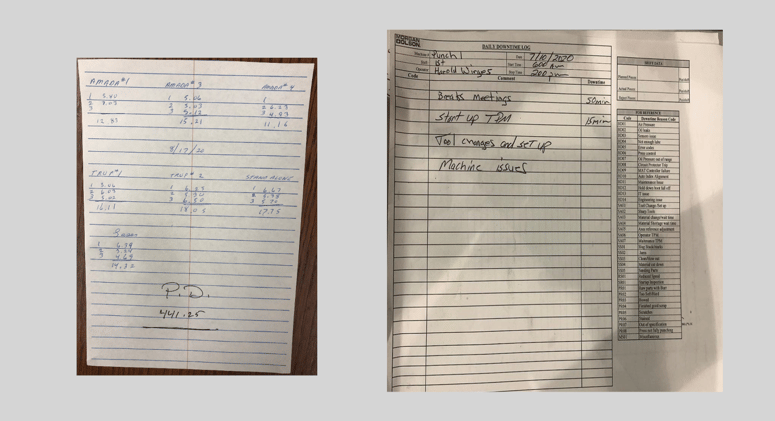 Manually collecting downtimes is not only incredibly time-consuming on the part of both operators and managers, but also prone to errors. It is highly inefficient and not actionable, paving the way for automated data collection solutions that can inform you of downtime events in real-time and help you understand long-term trends via analytics.
Manually collecting downtimes is not only incredibly time-consuming on the part of both operators and managers, but also prone to errors. It is highly inefficient and not actionable, paving the way for automated data collection solutions that can inform you of downtime events in real-time and help you understand long-term trends via analytics.
Why is Downtime Tracking Important?
Tracking downtime is vital because understanding the state of the equipment or its subcomponents can help managers make decisions to improve efficiency. Once analyzed, it can be used to develop improved Standard Operating Procedures (SOPs). With better SOPs, operator tasks, ergonomics, material staging, and other aspects of equipment operation can be optimized.
Studies show that up to 70% of companies are unaware of the time and date that their equipment is due for maintenance. Maintenance management can use downtime tracking to develop preventive maintenance strategies to limit downtime and improve overall equipment effectiveness.
Investment in capital equipment can take a large share of available capital. By reducing downtime, companies can reduce Capex and many of its associated costs. This can also unlock capacity in the form of existing equipment that helps delay or reduce overall capital expenditure and frees up money for operating cash and other improvements.
Collecting Downtime Data
Traditional data collection of downtime events was exclusively manual. Paper forms on clipboards, “trouble tickets,” spreadsheet-based analysis, and formulas were used to collect downtime data. Once this data was collected, it needed to be aggregated, entered into a spreadsheet, and delivered in a consumable report to managers and others who could make decisions.
As OEM companies began to add or embed electronic information collection to their equipment, reasons could be streamlined. But without comprehensive software and automated analysis, the information still required collection and collation. Manual and partially automated recording of downtime events both lacked the benefit of real-time analysis. This leads us to a truly paperless approach to manufacturing.
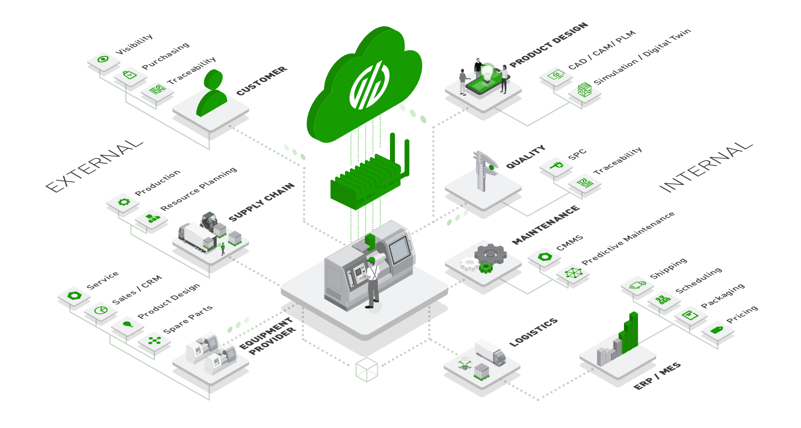
Real-time downtime tracking solutions such as MachineMetrics, autonomously collect machine and operator data to not only enable operators and managers to get notified of downtime immediately but also be able to analyze data for long terms trends.
Improve Efficiency by Using Downtime Tracking Software
By using downtime tracking software, manufacturers can improve the efficiency of manufacturing. Insights are real-time, analysis is unbiased, and data collection of downtime events is automated. This streamlines the collection process and improves efficiency throughout the factory.
Want to See the Platform in Action?
Top Benefits of Using Downtime Tracking Software
Manufacturers can detect trends and analyze data based on real-time insights and contextualized reporting by using real-time tracking software. Benefits include:
Reduces Human Error
Downtime causes headaches for any industry. But in manufacturing, a higher percentage of that downtime is caused by human error. A study in 2017 showed that unplanned downtime in manufacturing was as high as 23%. The software helps identify incidents caused by human error versus other causal categories. Knowing the frequency of these errors and where they happen can help managers improve labor utilization and skillsets by designing improved training. It can also help engineers install or improve sensors, guards, and other mitigation methods to reduce human error.
Eliminates Bias
Manual data collection is often riddled with bias. Different operators and technicians may record or categorize events differently. This leads to ambiguous or faulty decision-making because the solution does not fully address the root cause of the problem. Bias may also be evident in the analytical component of data collection. Managers may interpret data differently or assign different rank priorities to some issues more than others. And the lack of real-time availability of data may compound the problem.
Improves OEE
With downtime tracking software, maintenance management can have more confidence in designing preventive maintenance programs. They know the exact cause of unplanned downtime with real-time data and insights and can incorporate this into their solution. It can also help optimize planned maintenance efforts by allowing for prescriptive or predictive maintenance based on the data. As unplanned downtime improves, maintenance management can optimize their programs, and overall equipment effectiveness increases, improving efficiency and reducing maintenance costs in terms of both labor and parts.
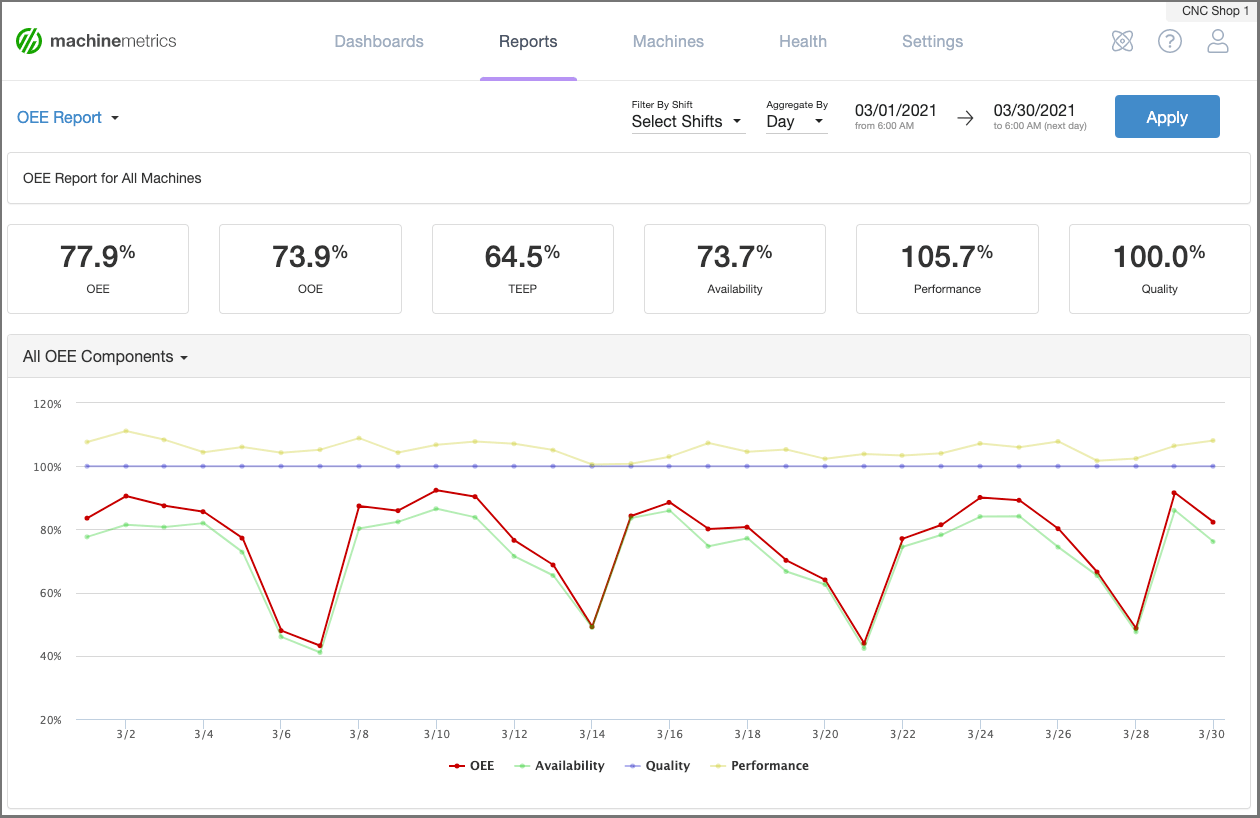 MachineMetrics enables manufacturers to track OEE in real-time by autonomously collecting and standardizing machine data.
MachineMetrics enables manufacturers to track OEE in real-time by autonomously collecting and standardizing machine data.
Increases Capacity
Tracking downtime with software can improve the manufacturing process by unlocking capacity. In today’s high-speed manufacturing world, OEM machinery can be costly. This is important for all manufacturers but is especially burdensome for small and medium-sized businesses. By using downtime tracking software, downtime is reduced across many different categories. As mentioned above, these may include maintenance, bias, and human error. But it can also help improve processes and even improve facility layout. Cumulatively, these changes increase capacity throughout the factory. By improving capacity, companies can reduce their capital expenditure program and free up operating capital.
Facilitates Process Improvement
Process improvement is one of the most significant benefits of tracking downtime with software. Automated data collection combined with analytics allows decision-makers the opportunity to conduct root cause analysis and optimize, change, or adjust production processes. And with real-time data, whole categories of downtime can be eliminated or significantly reduced. In others, floor layout, machine position, material flow, WIP, and other production flow processes can also be improved to minimize downtime. Maintenance management can also improve processes and overall equipment effectiveness by predicting failures or staging repair parts near the equipment before use. In addition to enhancing OEE, these new processes can reduce operator error, eliminate bias, sharpen training, and improve overall skillset and labor utilization across the enterprise.
Reduces Quality Fallout
Quality loss at the machine level is another category of downtime for which there are many contributing factors. It may be equipment conditions where wear and tear are increasing fallout. Or it may be that material or feedstock errors cause quality fallout or damage to the equipment when they fail. Understanding the frequency and the degree to which they contribute to downtime can offer a broad range of solutions for manufacturers to engage in quality assurance, such as improved quality of raw materials from vendors, better maintenance response or preventive maintenance programs, or process improvement for inspection.
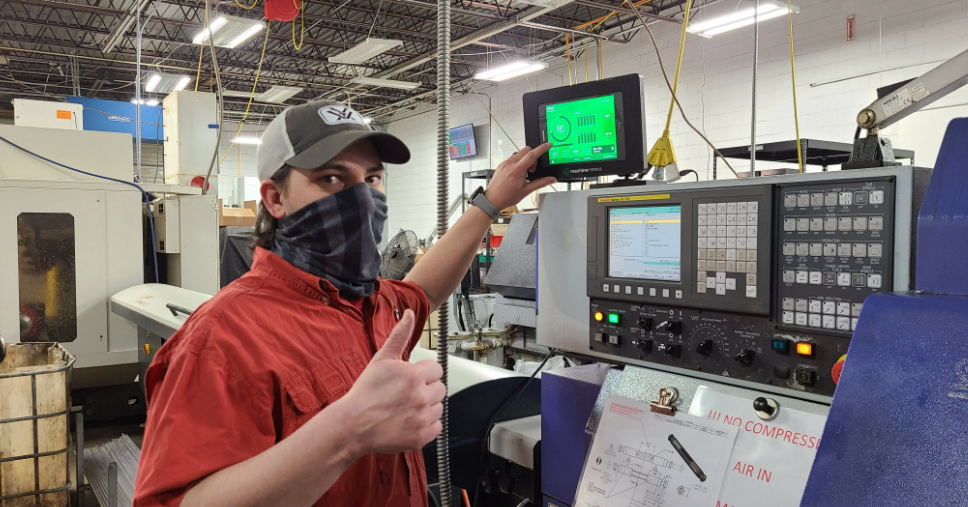
Improves Decision Making
Manufacturing management can make better decisions because data is real-time and tied to analytics. Without the bias inherent in the manual or semi-automated collection of downtime data, software analysis is sharper and more likely to be actionable within a critical spectrum to allow for improvement. By knowing precisely what the categories of downtime are and their rank of priority, managers can devote time to those that will deliver the best results in the most cost-effective manner.
What Features Should Downtime Tracking Software Have?
Downtime tracking software can change the way a manufacturing operation works. By having accurate data on the categories, time, priority, and reason for each downtime event, manufacturers can manage capacity, efficiency, OEE, and cost in real-time and work to improve them. MachineMetrics offers best-in-class software with an advanced analytics platform and operator tools to help visualize downtime and deliver actionable insights to the production floor.
Let's take a look at some of the features MachineMetrics has to help you track and reduce downtime across your shop floor:
Automated Machine Data Collection with Operator Insight
MachineMetrics autonomously collects and standardizes machine data across any make and model of machine. This propagates a standardized stream of downtime data no matter the equipment on the shop floor, surfacing this information in both pre-built and custom reports and dashboards (which we will discuss below).
Our plug-and-play solution connects directly to the machine control and also collects contextual data from operators via tablets placed at each machine. In this way, manufacturers not only have accurate downtime data directly from the machine, but also data that explains the “why” behind these downtimes.
Here are some of the data points you would have access to:
- Downtime category
- Whether the Downtime is Planned or Unplanned
- Duration of downtime
- The machine the downtime occurred on
- The time the downtime occurred
- The shift or operator running the machine
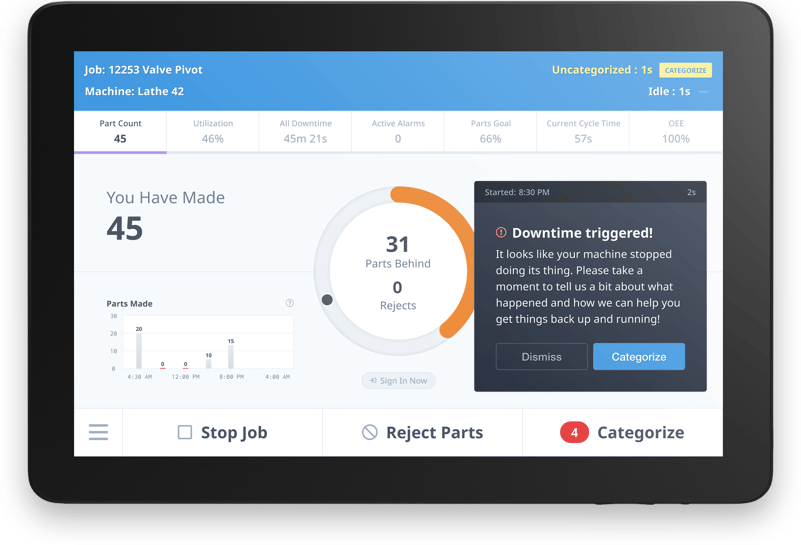 Tablets placed at each machine prompt operators to categorize downtime reasosn for an accurate view of why machine are going down.
Tablets placed at each machine prompt operators to categorize downtime reasosn for an accurate view of why machine are going down.
Real-Time Dashboards Reveal Downtime in Real-Time
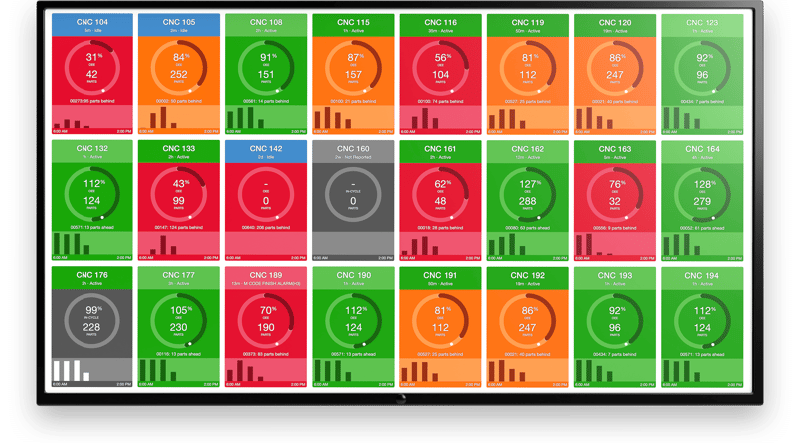 With dashboards placed across the shop floor, as well as key information shown on each machines' tablet, both operators and managers have visibility into machine performance. Analyzing a real-time dashboard can inform your team of a machine that is falling behind expected production or if a machine is not running so that you or your team can take immediate action.
With dashboards placed across the shop floor, as well as key information shown on each machines' tablet, both operators and managers have visibility into machine performance. Analyzing a real-time dashboard can inform your team of a machine that is falling behind expected production or if a machine is not running so that you or your team can take immediate action.
Further, this visual management system ensures a sense of accoutnability on the part of all shop floor employees, and gives them a tool to better understand their performance. This visibility alone can provide 20% increases in productivity.
Analyzing Data in Out-of-the-Box Reports
MachineMetrics comes with pre-built reports for manufactures to take action based on accurate machine data. One of the most useful reports when it comes to udnerstnad and recufing downtime is the Downtime Pareto Chart:
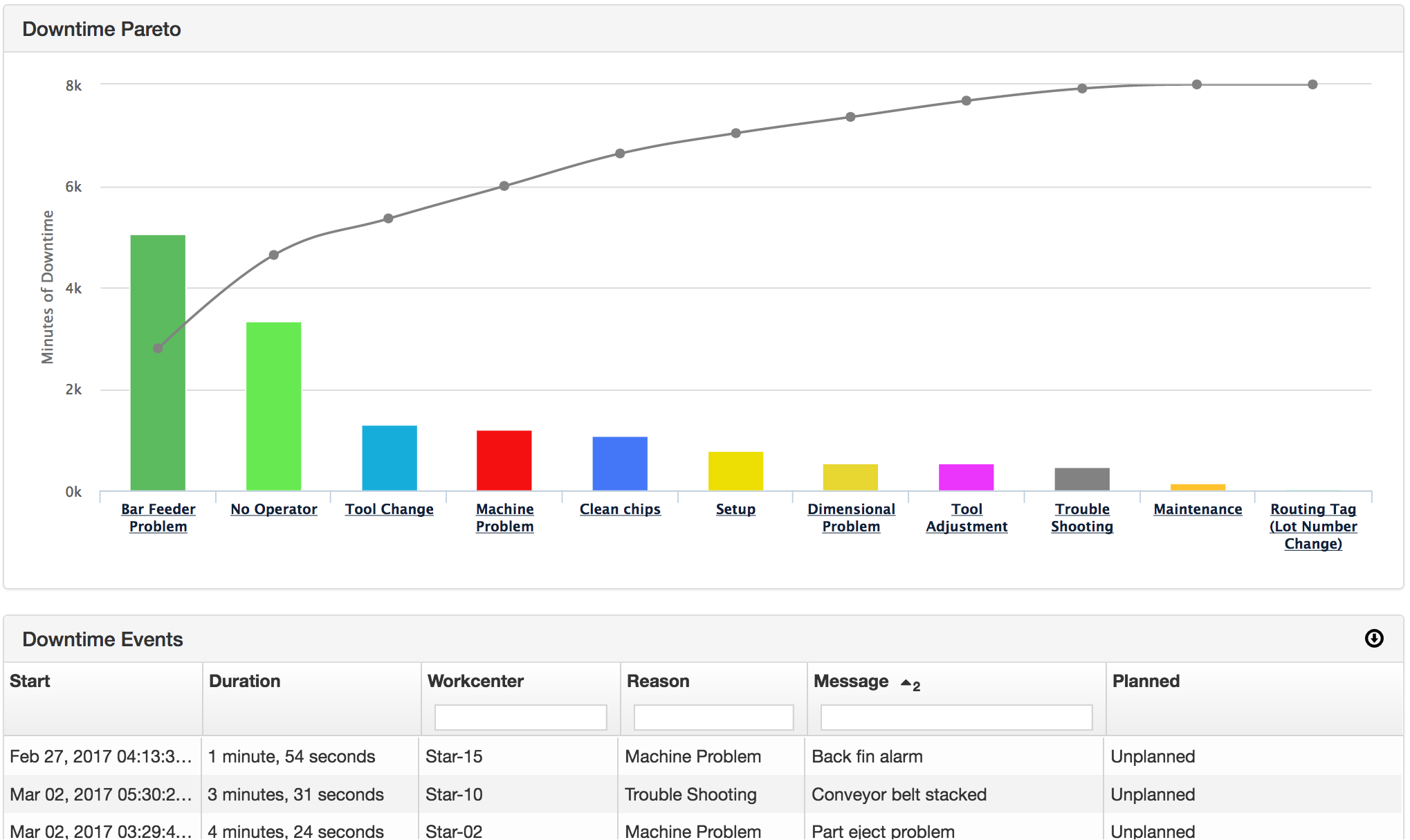
This report outlines the top reasons for downtime, allowing you to prioritize your continuous improvement efforts. Furthermore, you can segment the data amongst different shifts, machines cells, or even individual machines for a more drilled-down look at where problems may lie. This allows you to understand high and low performing shifts, problems with individual machines, and jobs that have proven difficult.
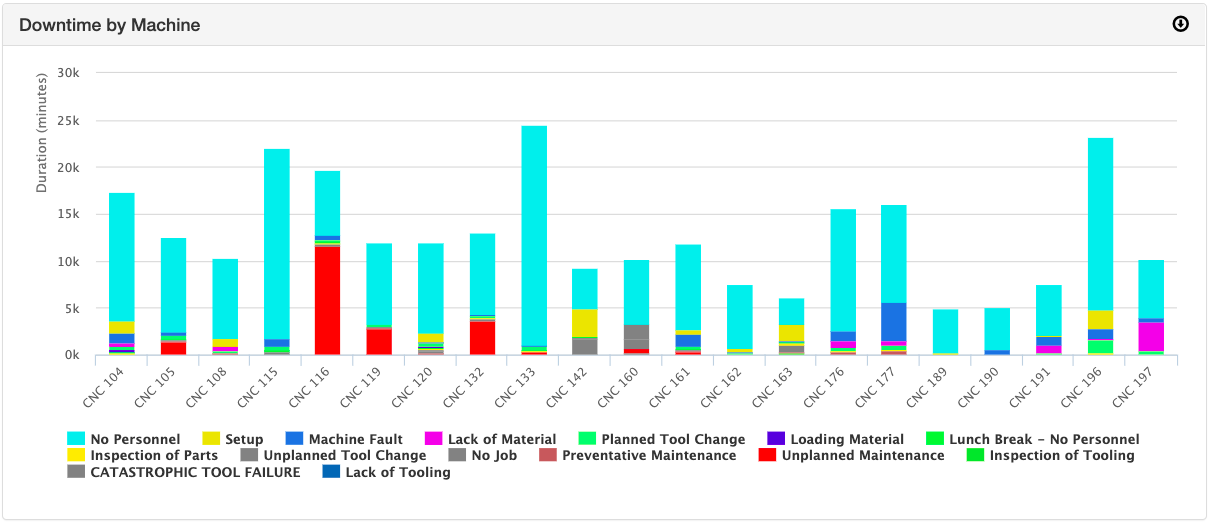
Workflows and Notifications
The beauty of automated, accurate, and standardized real-time machine data is that it can be used in a variety of ways to enable better communication, process optimization, and automation.
Workflows allow your team to take immediate action on downtime events by notifying the right people at the right time. For example, say a machine is down due to a maintenance issue. A workflow can be enabled to automatically notify the maintenance team, or create a work order in a CMMS system.
Or, if an operator notices that material is running low at a machine, they could manually trigger a workflow that would notify the materials manager, and they can do this right from the machine to prevent any downtime from occurring.
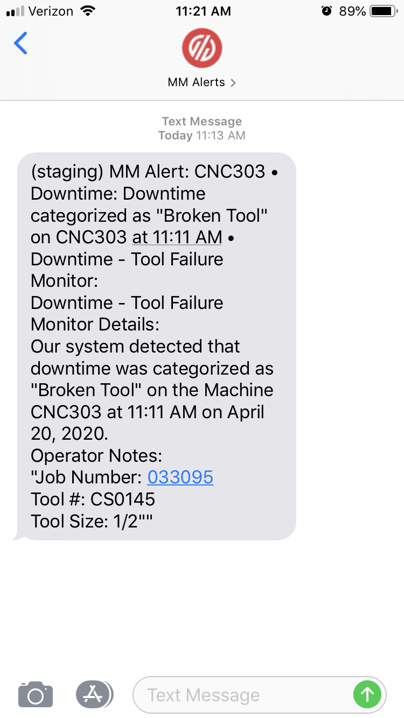
A text alert example of a maintenance issue that can be automatically enabled via a workflow.
Ready to Get Started?
With MachineMetrics, downtime can be consumed in easy-to-read, relevant reports and Pareto charts. Both operators and managers can see what fault is causing the most downtime in real-time and act quickly to get equipment up and running.
Automated downtime tracking software is a critical component of manufacturing success. MachineMetrics is not only built to deliver value quickly with its plug-and-play nature but also to be used as a platform for continuous value creation. Learn more about how MachineMetrics can enable visibility and control of your shop floor by booking a demo today.
Ready to connect your shop floor?


.png?width=1960&height=1300&name=01_comp_Downtime-%26-Quality_laptop%20(1).png)





 With dashboards placed across the shop floor, as well as key information shown on each machines' tablet, both operators and managers have visibility into machine performance. Analyzing a real-time dashboard can inform your team of a machine that is falling behind expected production or if a machine is not running so that you or your team can take immediate action.
With dashboards placed across the shop floor, as well as key information shown on each machines' tablet, both operators and managers have visibility into machine performance. Analyzing a real-time dashboard can inform your team of a machine that is falling behind expected production or if a machine is not running so that you or your team can take immediate action.


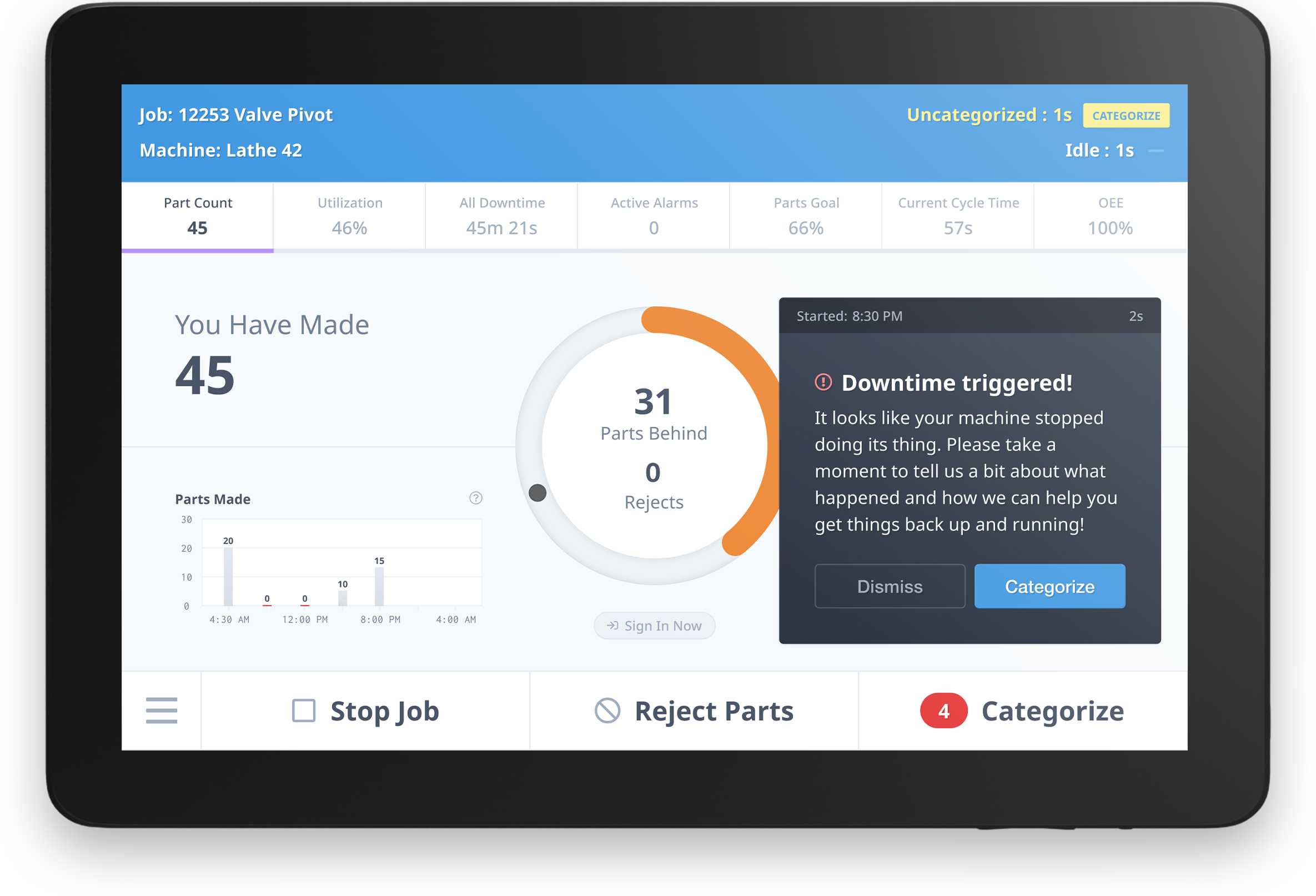
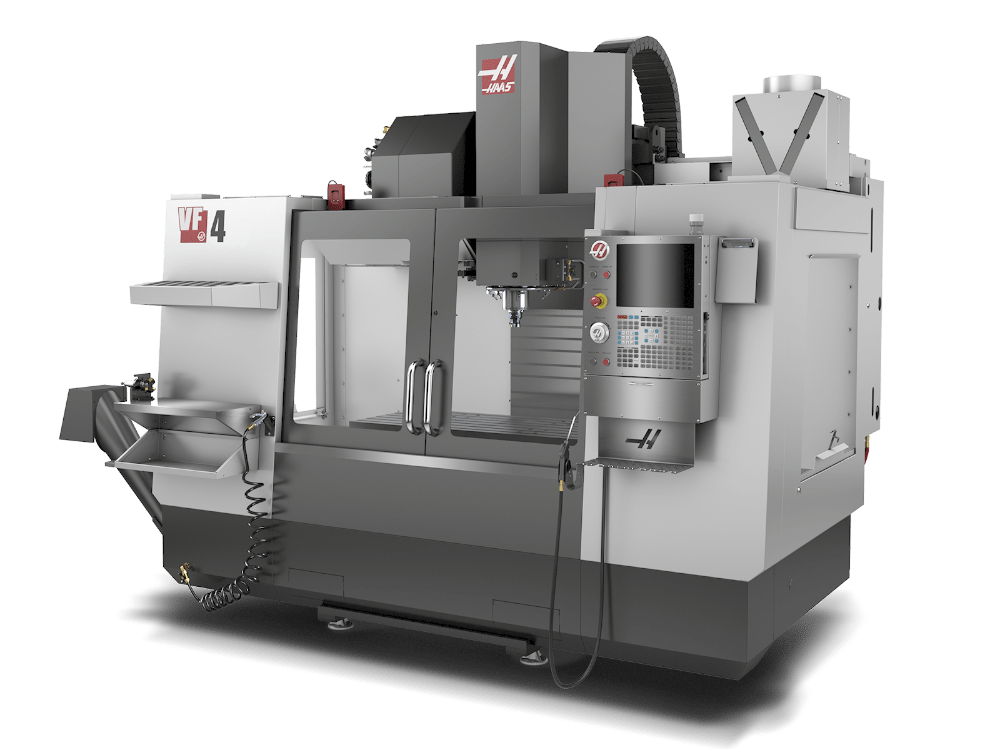
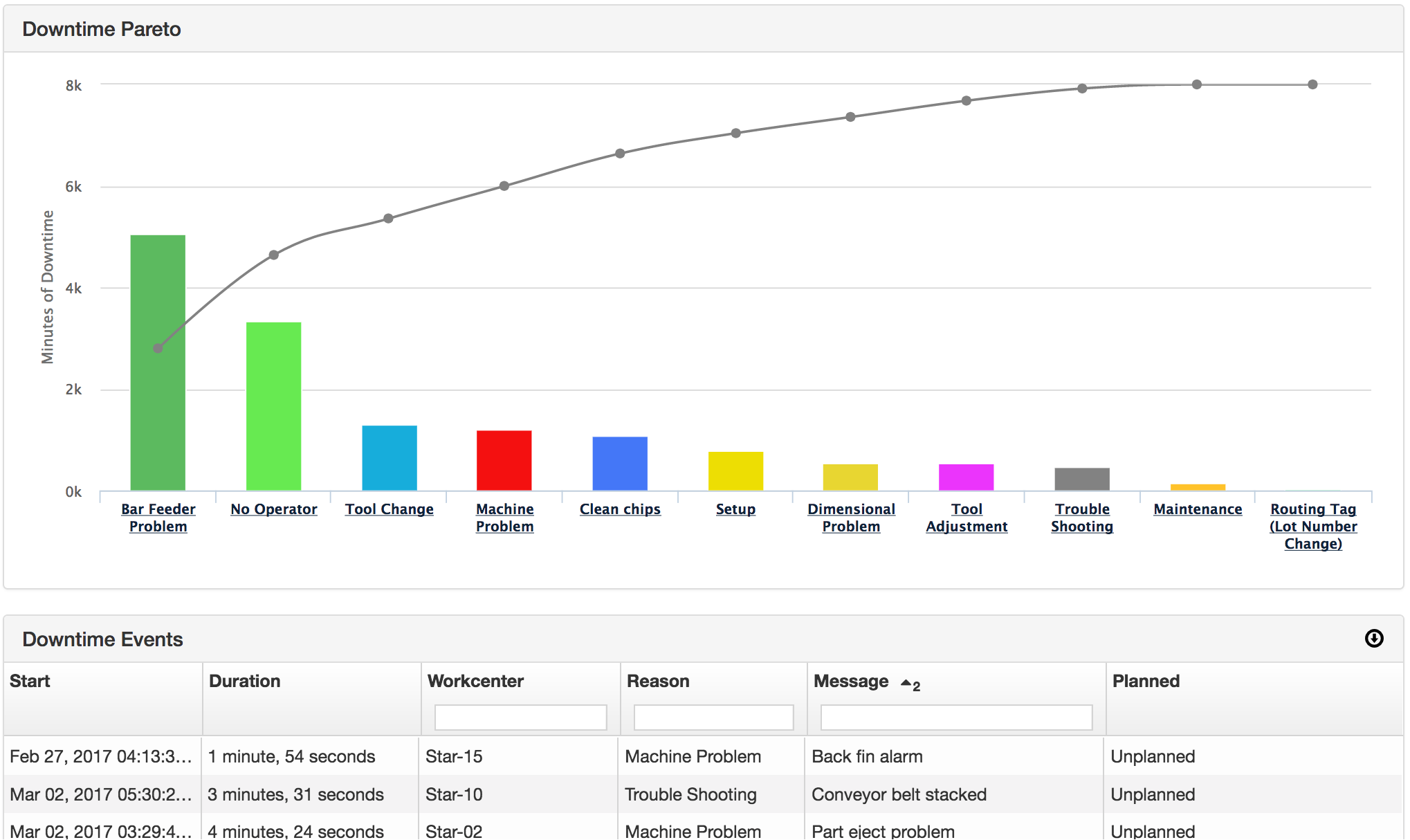
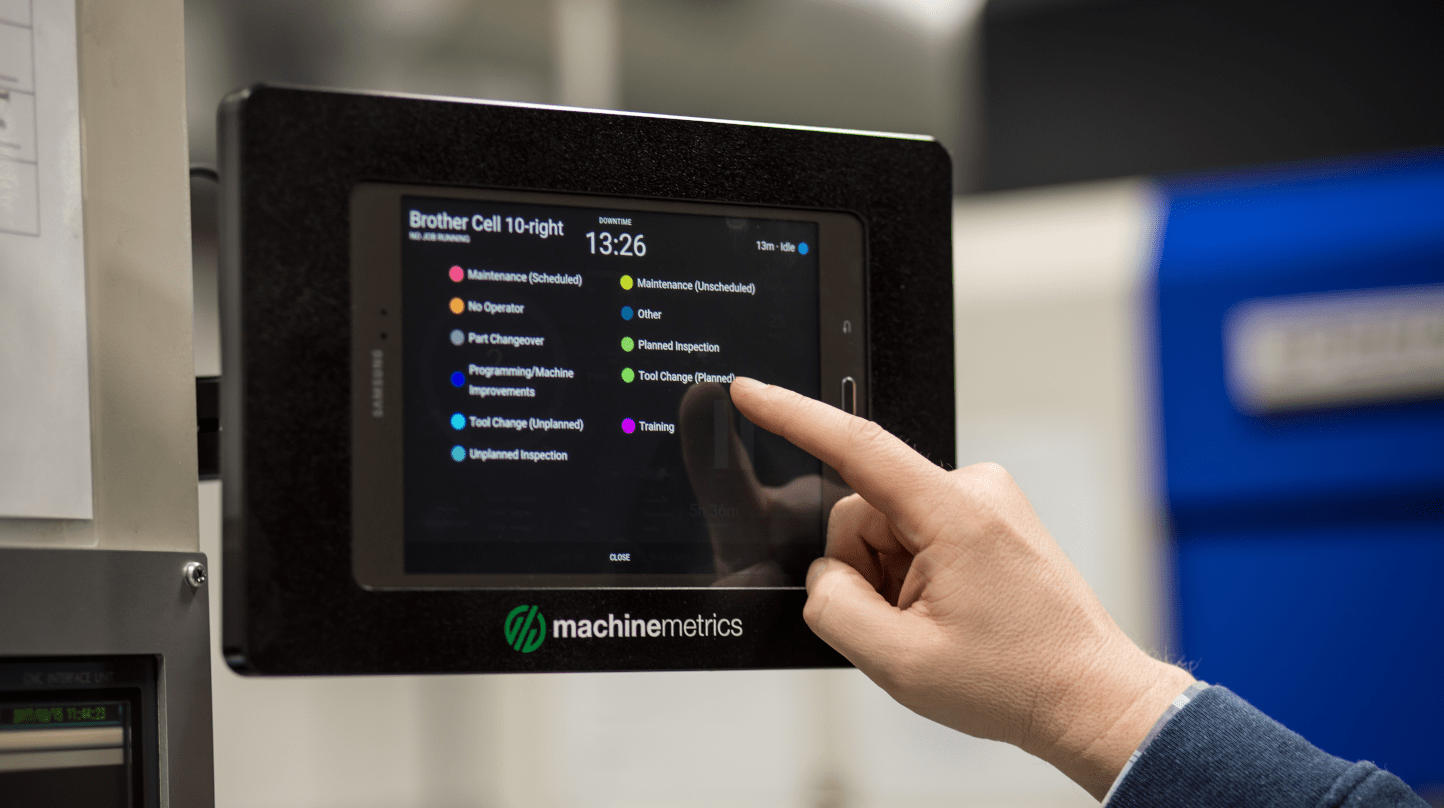
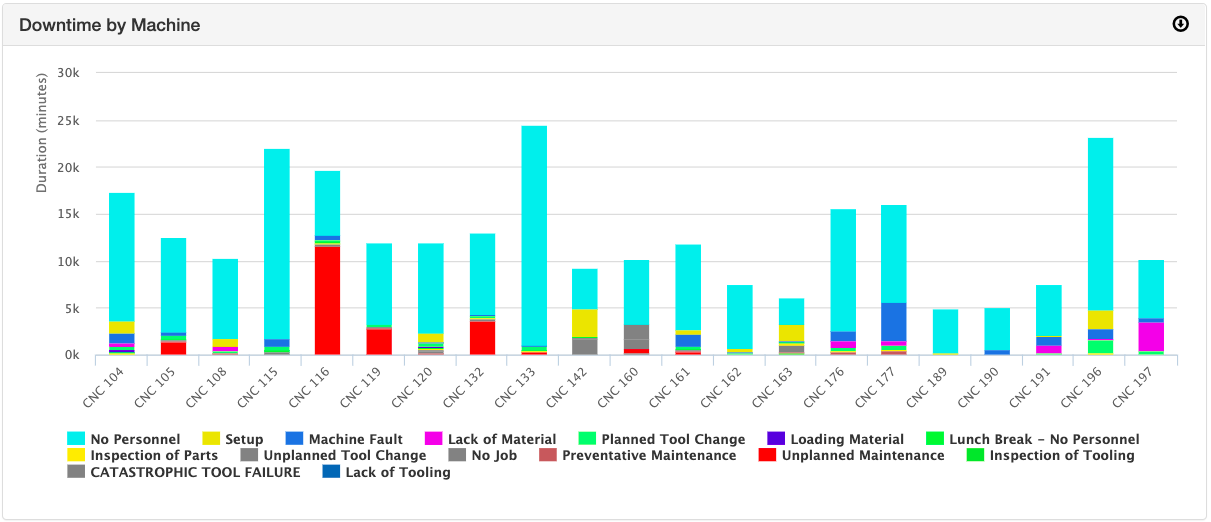
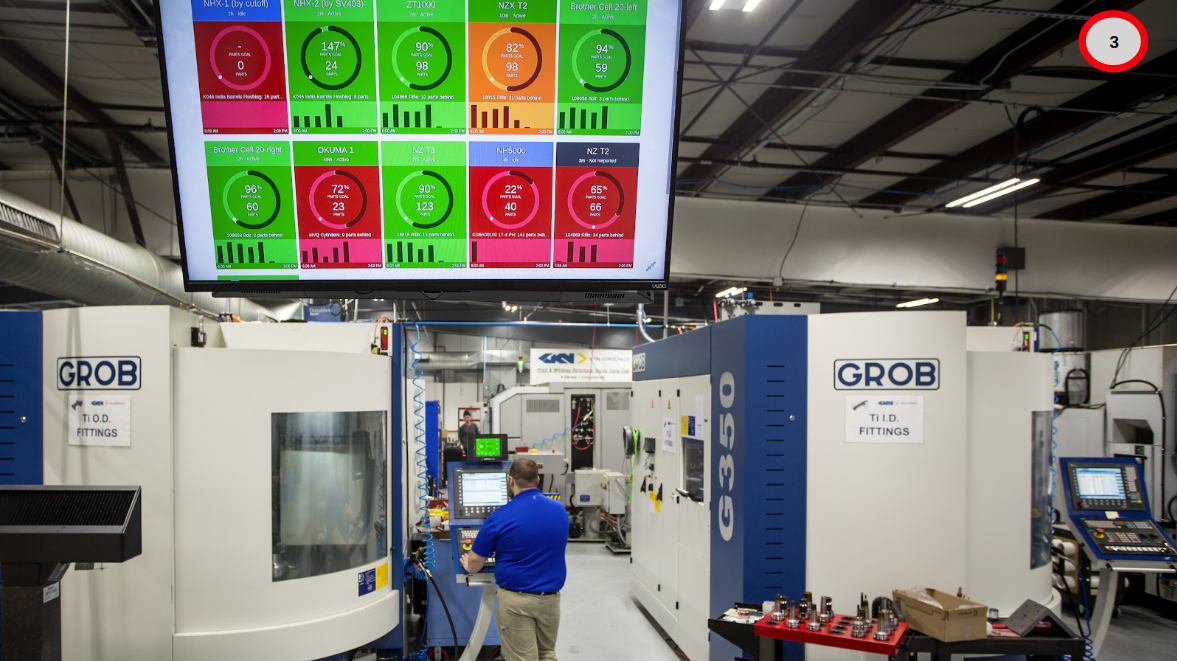
Comments